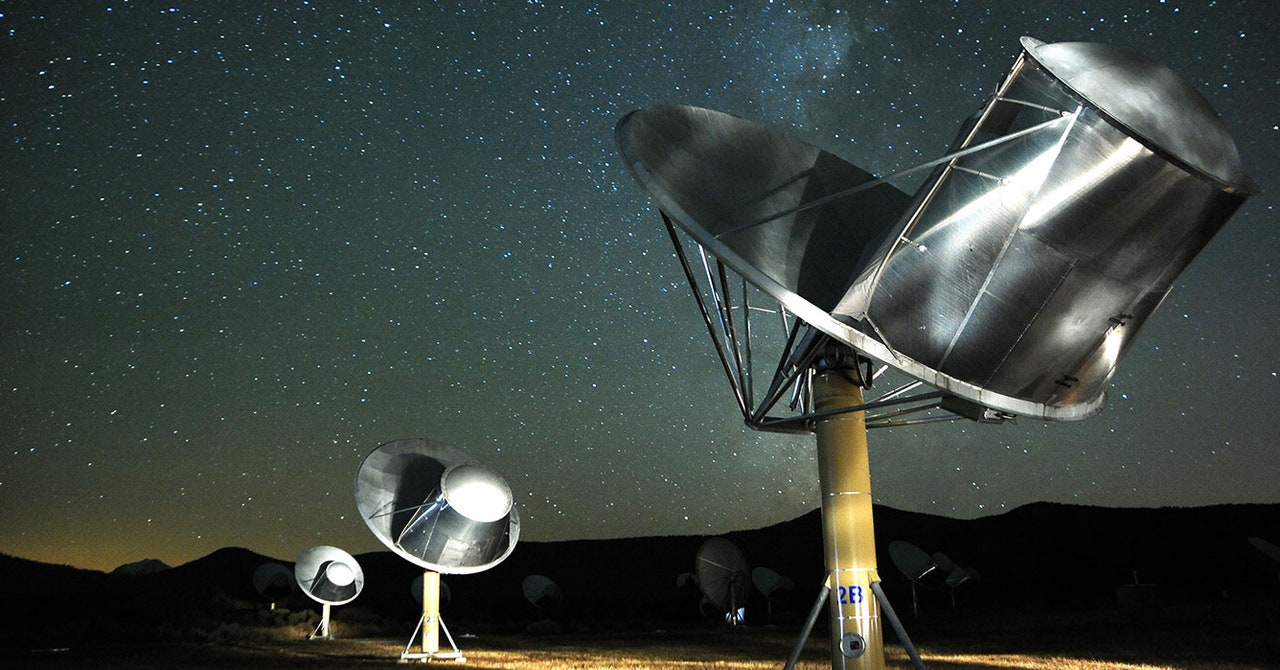
Humanity has sent its own simple outgoing messages, like Frank Drake’s message from the Arecibo Observatory in Puerto Rico to the globular cluster M13, which included information about our solar system and DNA, or the Golden Records on the Voyager spacecraft, which include sounds and symbols showing the diversity of life and culture on Earth. We’ve even tried sending outbound “music lessons.”
Still, aliens might beam us something more complex, or a message in a format people have never encountered before. No matter how much extraterrestrials might want to be understood, their message could prove difficult to decipher, since they’ll likely have an entirely different language, culture, history, biology, and level of technological development than humans. And of course, a real alien signal would come from much farther away than Mars, perhaps originating many, many light-years away. That means it might have been sent millennia ago, maybe even by a long-dead civilization, de Paulis says.
But the Sign in Space experiment is more about us than it is them. De Paulis has been working with radio astronomers on art-related projects for years, including one called Opticks that reflected images off the surface of the moon, with their distorted colors and shapes evoking a long lunar journey. With this new project, she has been trying to reach a wide global audience—and so far thousands of people from around the world have been discussing their theories on a Discord channel as they work on decoding attempts. (One theory is that some of the radio data, when arranged in a particular way, could make up a 256- by 256-pixel image, with clouds of dots displayed in a way that perhaps resembles the Pleiades or another star cluster.)
At a small online workshop she led yesterday, de Paulis pointed out that so far people have submitted more than 100 sketches, images, poems, and essays, showing the broad range of thoughts and emotions evoked by the notion of alien contact. Many sketches appear welcoming, including drawings of humans, a human hand, Earth, a waving alien, or the word “peace.” Others include invented symbols or pictographs—speculations about what could be included in a “first contact” message.
Video: Olivier Auber
SETI has at times lain uneasily between astrobiology—the study of exoplanets that could host life—and attempts to sight UFOs, which are hard claims to verify or investigate scientifically. But that could be seen as a largely Western distinction, says Bowdoin College anthropologist William Lempert, who led a workshop for the project last week about different cultural outlooks on the celestial realm. “This tendency to view space as a cold emptiness separated by material objects and perhaps lifeforms is actually an outlier framework,” he said, noting that the Polynesian and Aboriginal Australian people he has worked with have different perspectives. “Most people imagine outer space and aliens as neither ‘outer’ nor ‘alien,’” he says.
Philosopher and ethicist Chelsea Haramia, another of de Paulis’ colleagues, will lead a workshop later in June about how people can deal with the uncertainty inherent in thinking about alien contact. While responses to A Sign in Space have been overwhelmingly positive, a real call from ET could elicit more mixed responses, including fear, panic, and the urge to lash out at scientists and other experts, Haramia says. This project could help people have a subjective experience of how they’d react if it really ever happened, she says, and answer the question, “What would a successful alien detection be for me?” She describes the art project as a way to make the abstract real, like actually tasting a durian fruit instead of just hearing a description of what one is like.
De Paulis believes it will take at least weeks—or possibly months—before someone cracks the message. It’s also possible the message might never be completely deciphered, and de Paulis is alright with that. She and her colleagues refer to other artworks about extraterrestrial contact—like Italo Calvino’s Cosmicomics, the movie Arrival, and the Star Trek episode “Darmok”—in which an alien race communicates confusingly through metaphor, invoking histories and tales humans don’t understand. “If we ever receive an extraterrestrial signal, scientists won’t know where the noise ends and where the actual message begins,” she says. “So this is quite faithful to what would happen if the scientific community decided to share the signal in an open source format.”

